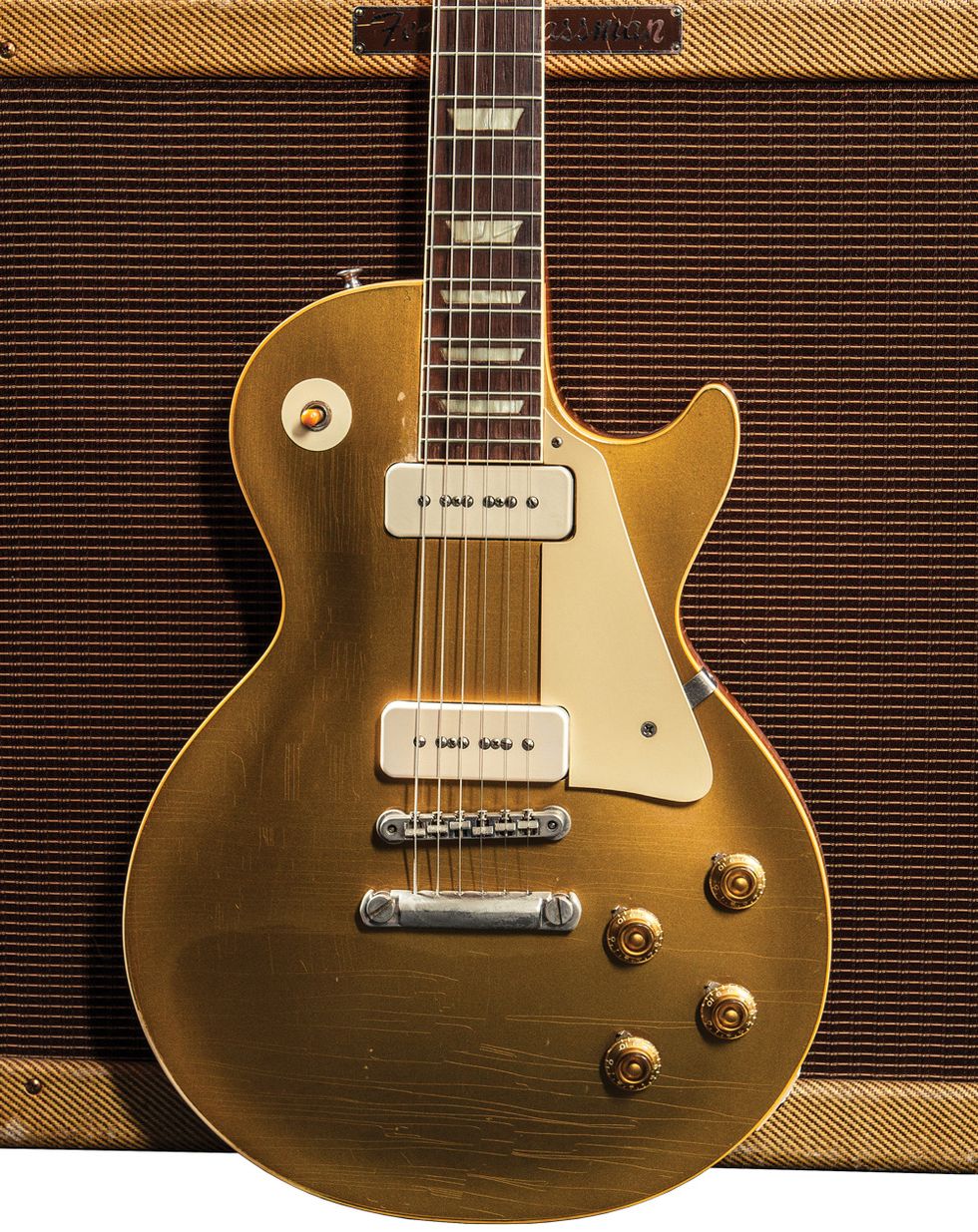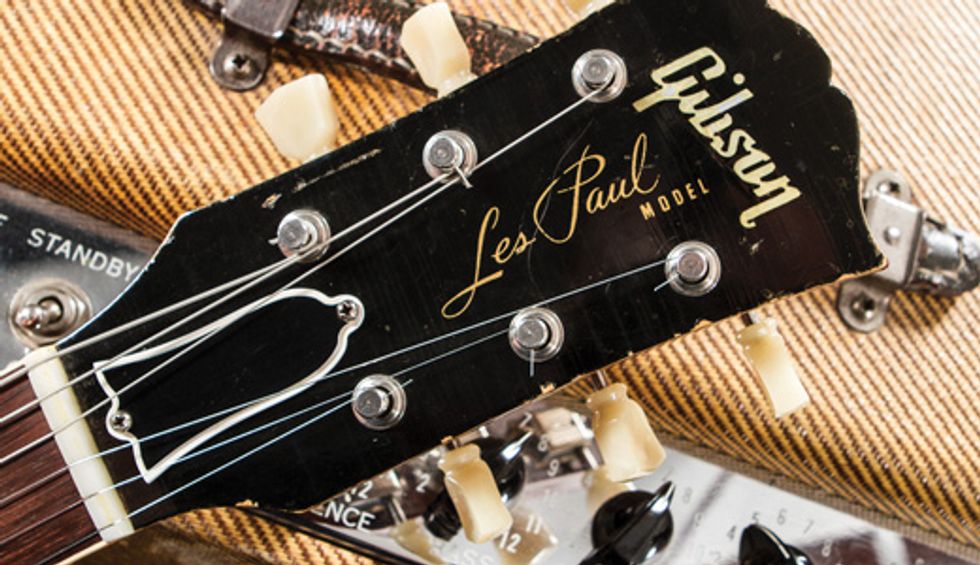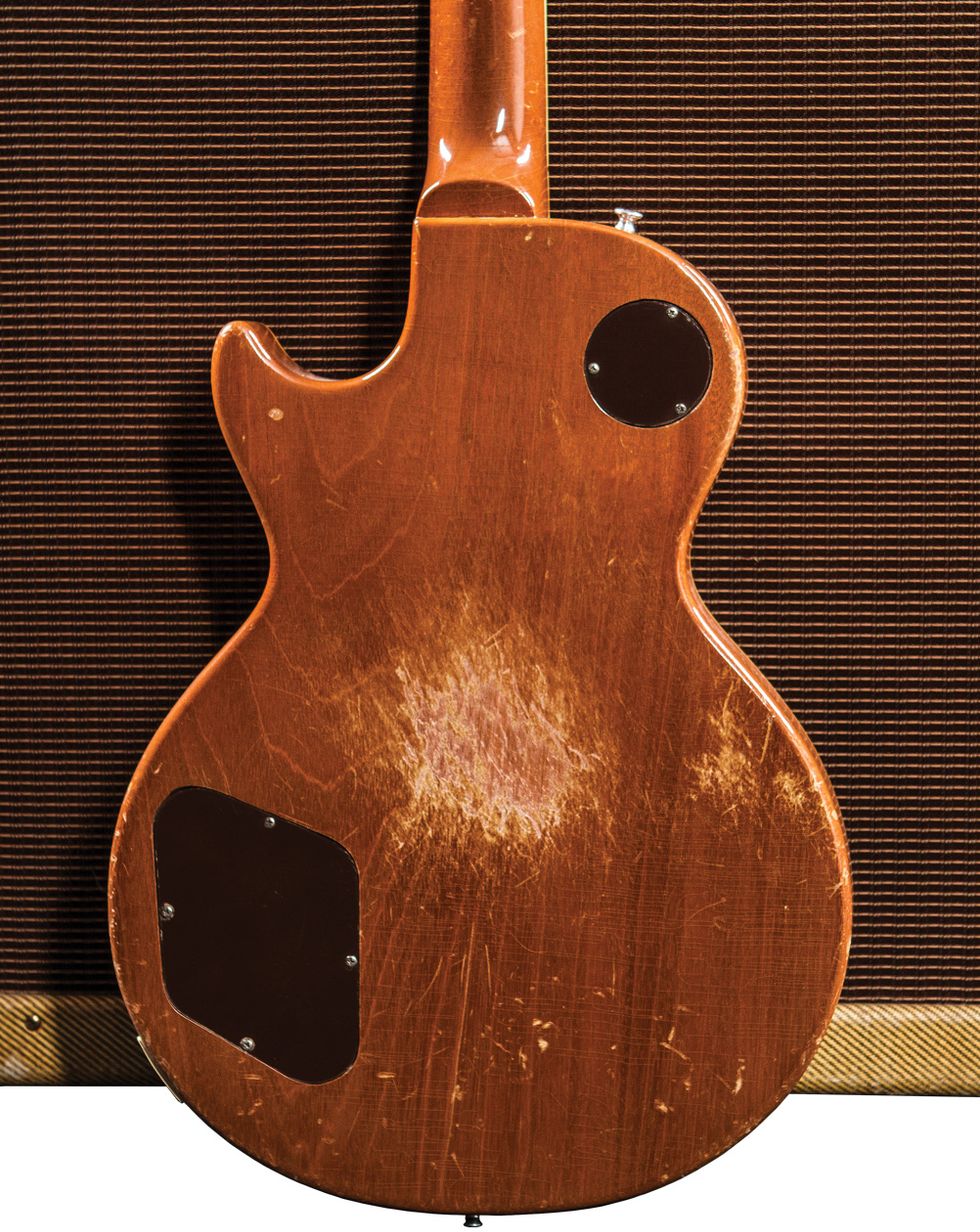When Gibson teamed up with the legendary recording star Les Paul in 1952, the company created a guitar that became one of the most influential and popular instruments of all time: the Les Paul model. The text in the 1957 Gibson catalog proclaimed: “The famed ‘Les Paul tones’ can now become a reality for all guitar players with this beautiful, solidbody Les Paul guitar, incorporating many unusual Gibson features. Striking in appearance with its gold-finished, carved-maple top, mahogany body, and neck, the Les Paul name is in gold script on the peghead of this model.”
Scratches where the neck pickup and fretboard meet, and the finish cracks across its body, are like the rings of a tree, showing this Les Paul’s age.
The Les Paul evolved through the 1950s as practical improvements were introduced. By 1956—the year of this column’s example—the bridge had been modified twice from the original trapeze tailpiece designed by Les Paul. The first change, in 1953, was the wraparound stop-bar tailpiece screwed right into the guitar’s top. This increased sustain and allowed for palm muting the strings. Finally, in 1956, the classic separate stop-bar and fully adjustable Tune-o-matic bridge combination was added. (That was previously a standard feature only on the Les Paul Custom, which was launched in 1954.) This allowed for near-perfect intonation. That was also the last year that P-90 pickups were offered as stock during the original run of Les Pauls.
Our Les Paul has the typical features of a 1956 goldtop. The brilliant finish was achieved by using a bronze powder mixed with nitrocellulose lacquer. Numerous vintage goldtops turned green in areas due to the bronze oxidizing when the clear coat was worn through. This one has very little “greening.” The pickup covers, pickguard, and rhythm/treble toggle surround are standard cream-colored plastic. The bold bonnet control knobs, which replaced so-called speed dials in 1955, are clear plastic sprayed from underneath with the same bronze powder finish used on the guitar.
This is a perfect example of a vintage Gibson thin-profile headstock of the kind employed for the company’s premium instruments of the ’50s and ’60s.
A new Les Paul goldtop was $247.50, plus $42 for a case, in Gibson’s 1957 price list. The current value for one in excellent all-original condition is $30,000. The amp behind the guitar is a 1955 Fender Bassman 5D6-A. Two 6L6 power tubes send 40 watts through four Jensen P10R speakers. The list price in Fender’s 1957 catalog was $339.50. The current value of the amp is $8,000.
Ouch! Another sign of this instrument’s history of use is the belt-buckle rash on its back. Guitarists take note—and maybe turn that buckle to the side on gigs.
Sources for this article include The Early Years of the Les Paul Legacy: 1915–1963 by Robb Lawrence, Gibson Electrics—The Classic Years by A.R. Duchossoir, Gibson Guitars: 100 Years of an American Icon by Walter Carter, and Fender Amps: The First Fifty Years by John Teagle and John Sprung.










![Rig Rundown: Russian Circles’ Mike Sullivan [2025]](https://www.premierguitar.com/media-library/youtube.jpg?id=62303631&width=1245&height=700&quality=70&coordinates=0%2C0%2C0%2C0)

















